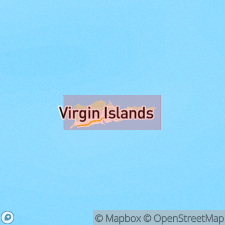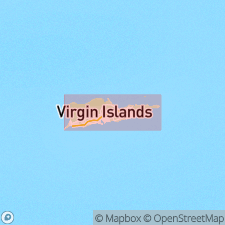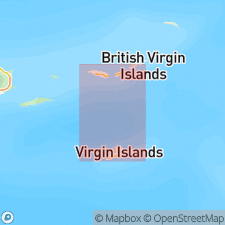
- Usage in publication:
-
- Caledonia Formation
- Modifications:
-
- Overview
- Dominant lithology:
-
- Mudstone
- Sandstone
- Limestone
- Chert
- Conglomerate
- AAPG geologic province:
-
- Caribbean region
Summary:
Composed of a variety of rock types, including, in order of abundance, mudstones, sandstones, limestones, cherts, and conglomerates. Thickness of any particular lithology generally on scale of inches; most rock types are repeated, giving homogeneous aspect to entire formation. Thickness unknown as base is not exposed. Maximum of 4,200 ft estimated for northwest part of island, but may be thicker. In Prosperity thrust sheet, estimated at 7,500 ft. On eastern part of island, is at least 9,000 ft, and is 18,000 ft if measured from Buck Island to south coast of St. Croix, assuming no significant faulting. Includes East End Member in upper part of eastern half of island. Grades laterally into Allandale Formation; overlain by Cane Valley Formation and Judith Fancy Formation. Age is Late Cretaceous.
Source: GNU records (USGS DDS-6; Reston GNULEX).

- Usage in publication:
-
- Caledonia Formation*
- Modifications:
-
- Overview
- Age modified
- AAPG geologic province:
-
- Caribbean region
Summary:
Strongly folded Upper Cretaceous deep-water (oceanic) calcareous turbidites and volcaniclastics (over 34,700 feet thick) are divisible into four formally recognized units. In ascending order, they are Caledonia, Allandale, Cane Valley, and Judith Fancy Formations. Top of Judith Fancy is marked by unconformity. Above this is an unnamed Paleocene(?) accumulation. Above that are the lower Eocene to lower middle Miocene Jealousy Formation and the upper Oligocene to mostly Miocene Kingshill Limestone. The age of the Caledonia is possibly as old as Cenomanian, based on an ammonite discussed by Speed and others (1979) and as young as Campanian, based on Campanian fossils found in the overlying rocks, as discussed by Whetten (1966). The overall age of the Caledonia appears to be Cenomanian(?) to Campanian, but the author feels the age cannot be clearly bracketed.
Source: GNU records (USGS DDS-6; Reston GNULEX).

- Usage in publication:
-
- Caledonia Formation*
- Modifications:
-
- Overview
- AAPG geologic province:
-
- Caribbean region
Summary:
Author follows usage of Whetten (1966) for the geologic units on St. Croix, VI. They include (ascending) the Late Cretaceous Mount Eagle Group, which consists of the Caledonia Formation, Allandale Formation, Cane Valley Formation (and its East End Member), and Judith Fancy Formation; Late Cretaceous Southgate Diorite and Fountain Gabbro intrusions; and Tertiary Jealousy Formation (early Eocene to middle Miocene) and Kingshill Marl (late Miocene, based on Gill, 1990).
Source: GNU records (USGS DDS-6; Reston GNULEX).
For more information, please contact Nancy Stamm, Geologic Names Committee Secretary.
Asterisk (*) indicates published by U.S. Geological Survey authors.
"No current usage" (†) implies that a name has been abandoned or has fallen into disuse. Former usage and, if known, replacement name given in parentheses ( ).
Slash (/) indicates name conflicts with nomenclatural guidelines (CSN, 1933; ACSN, 1961, 1970; NACSN, 1983, 2005, 2021). May be explained within brackets ([ ]).

